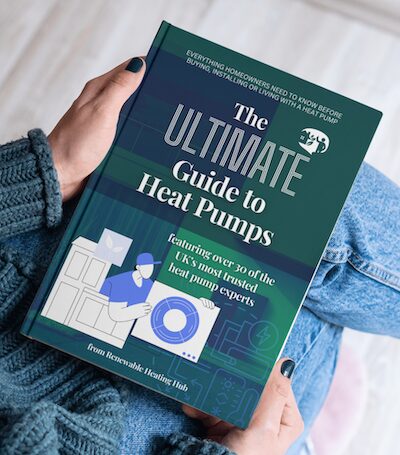Daikin Altherma ASHP technical specs
Hi,
I'm considering replacing my aging combi-boiler with an ASHP.
I've talked to 2 installers, one suggested a Vaillant Arotherm 12kW, the other a Daikin ("Daikin Altherma 3 H HT High Capacity Heat Pump (14-18 Class)"). These are both pretty big heat pumps, but the house is not very well insulated so has quite a high heat loss (we had a calculation done - and reducing heat loss is on the the to do list, but the existing boiler is nearing end of life, so I'm keen to replace it ASAP...)
Vaillant have a handy sheet with tech specs that shows the central heating output at different flow and external temperatures (e.g. the one I've been recommended suggests it can output 12.9kW at -3C with a central heating flow temperature of 45C). I'm assuming of course that these are approximations only.
My thinking was that I can compare these numbers to the actual energy usage of my house with the current set up (which I can estimate from gas usage) and see if the heat pump is roughly able to meet my requirements.
Does anyone know if Daikin has a similar data sheet somewhere? I've search around but can't find anything
thanks in advance!
Welcome to the forums @bm212. I reached out to Daikin this morning, and they'll send across the docs to me tomorrow and I'll post them here for your reference. Where in the UK are you based?
Get a copy of The Ultimate Guide to Heat Pumps
Subscribe and follow our YouTube channel!
Get a copy of The Ultimate Guide to Heat Pumps
Subscribe and follow our YouTube channel!
@bm212 you’re welcome. Let us know whether you go down the Vaillant or Daikin route.
Get a copy of The Ultimate Guide to Heat Pumps
Subscribe and follow our YouTube channel!
Posted by: @bm212Hi,
I'm considering replacing my aging combi-boiler with an ASHP.
I've talked to 2 installers, one suggested a Vaillant Arotherm 12kW, the other a Daikin ("Daikin Altherma 3 H HT High Capacity Heat Pump (14-18 Class)"). These are both pretty big heat pumps, but the house is not very well insulated so has quite a high heat loss (we had a calculation done - and reducing heat loss is on the the to do list, but the existing boiler is nearing end of life, so I'm keen to replace it ASAP...)
Vaillant have a handy sheet with tech specs that shows the central heating output at different flow and external temperatures (e.g. the one I've been recommended suggests it can output 12.9kW at -3C with a central heating flow temperature of 45C). I'm assuming of course that these are approximations only.
My thinking was that I can compare these numbers to the actual energy usage of my house with the current set up (which I can estimate from gas usage) and see if the heat pump is roughly able to meet my requirements.
Does anyone know if Daikin has a similar data sheet somewhere? I've search around but can't find anything
thanks in advance!
Might it be worth considering the size of heat pump required AFTER you have made the improvements to the property? As we are now heading into milder weather, perhaps the urgency to replace the aging gas boiler may be slightly less of a ‘distress’ factor.
If the insulation you intend to fit is sufficient to take the heat requirement down a notch, you might be able to use a smaller heat pump. If the insulation were not finished by next winter, you could use some supplementary heating pro tem; this might still be better long term as the smaller better matched heat pump should perform more efficiently for years to come. Regards, Toodles.
Toodles, heats his home with cold draughts and cooks food with magnets.
@toodles that is a logical approach. However, I'm going to need hot water, even in the summer, and I'm not sure I have a feasible short term alternative in the event that the boiler fails suddenly and I am left without a replacement for however long it takes until I can organise a heat pump installation.
I've had a heat loss survey done, and have done some calculations based on that. I also did my best to validate the calculations with experiments. Together this suggests that even with all the energy efficiency improvements that are practical to carry out (external wall insulation, replacing the remaining single glazed windows with double glazing, replacement of some of the radiators to account for the lower flow temperature coming from a heat pump rather than a boiler), I'll probably still need a similarly sized heat pump.
(These types of calculations are ultimately only estimates, and my ability to measure heat loss of the house was limited by the mild weather over the winter, but sadly this is the best information I've got at this point)
one issue you need to consider along with the radiator resize issue is the pipework size itself. i assume you have also looked at where you have space to accommodate your (new) hot water cylinder/heat store etc?
i think going down the insulation route first is a sensible option as you may be able to do a lot of that yourself, you could even fit your own new double/triple glazed windows, it isnt difficult, and get them signed off by building control. That will also save you a considerable amount of money. If you have a company who manufactures (or more likely has them manufactured for them) who would come out and measure etc, then the savings can be considerable, depending on how old your windows are and what style, then you might not even disturb any internal plastering/decorating (or just need a strip of upvc to cover any minor damage. Old style sash windows are a bit more difficult, but not complicated, they just need a bit more internal work after installation.
@misterb I can't really say too much about the pipework - except that what I see coming out of the floor going into the radiators looks like standard 12mm (ie not microbore). The rest of it is buried under the floor, and I don't really fancy taking that up to find out what's going on (there's a hardwood floor in much of the house, and I don't want to break it). It would be great if there was a non-destructive way of figuring out what the pipe sizes are...
I've got space to accommodate a cylinder so that should be ok I think.
Agree insulation and/or glazing is a good first option.
I'm definitely not going to be competent enough to fit my own windows, so that is a job I'll pay a professional to do!
A fair few of the windows are old and need replacing eventually anyway, so I'll happily do that first if the lifetime of the boiler permits.
If it's 15mm to the radiators then that's a positive!! As for the new cylinder, depending on layout/location, the cylinder might be better off in the loft as pipework can be run externally up the wall (well insulated of course)
I'm not expert and only know what I've read, so please don't take my comments as 'gospel', but I think it's well worth getting a few quotes to see if it's financially viable.
- 26 Forums
- 2,356 Topics
- 53.4 K Posts
- 253 Online
- 6,017 Members
Join Us!
Worth Watching
Latest Posts
-
RE: Octopus Cosy Heat Pump Owners & Discussion Thread
@kevh with the Cosy 6 I know it definitely goes to arou...
By HarrisonC , 4 hours ago
-
RE: Setback savings - fact or fiction?
@cathoderay yes I am familiar with SQL. Interesting num...
By RobS , 5 hours ago
-

Parsnip, Bacon & Coconut Milk Soup
First let me say, I am only a cook because I am human a...
By Toodles , 5 hours ago
-

RE: Controlling Daikin Altherma via P1P2 and Home Assistant
@weoleyric Oh Dear, I don’t think I am going to be of m...
By Toodles , 5 hours ago
-
RE: Electricity price predictions
Ben Watts posted on LinkedIn that he had updated this w...
By Judith , 11 hours ago
-

RE: The good, the bad and the not that great – my heat pump installation
Small update, Emailed and Spoke to Midea UK and they ...
By Burtis , 11 hours ago
-
RE: Solis S6-EH1P8K-L-PLUS – Why I Chose It and What I’ve Learned So Far
@bash Octopus does charge for the admin. The process al...
By Batpred , 11 hours ago
-
RE: External pipework insulation
@transparent HI all The products you mention are ver...
By David Smith , 11 hours ago
-
RE: New Fogstar 15.5kWh upright solution
Issues still under investigation by Solis... Fogstar ...
By Batpred , 11 hours ago
-
RE: Who's your electricity provider and what's your tariff?
I agree, the consumer is not being properly represented...
By Batpred , 11 hours ago
-
RE: Advice on internal circulation pump noise
Thanks @mikefl - I'll maybe have a look at the lock-shi...
By jtg , 1 day ago
-

RE: Heat Pump Heats the House… But It’s Not Cosy. Emitter Changes or System Tweak?
@toodles interesting suggestion, thanks. I will try to...
By GrahamF , 1 day ago
-
RE: Mitsubishi Ecodan Auto Adaption trial to stop cycling.
The interval you talk of, i think, will be 60min for an...
By F1p , 1 day ago
-
Agree with @majordennisbloodnok on the setbacks. We hav...
By ChandyKris , 2 days ago
-

RE: Speedcomfort radiator fans
@deltona the way the links were added broke the page. A...
By Mars , 2 days ago
-

RE: Refrigerant R32, is it now banned in the EU from 1st Jan 2027 for monobloc ASHPs?
This has been delayed from what I believe to be this ye...
By dgclimatecontrol , 2 days ago
-
RE: Are We Sleepwalking Into Another Race to the Bottom?
this is why I provided current flow temperatures in the...
By ksim , 2 days ago
-

RE: Why Millions of UK Homes Struggle With Heat Pumps
There's many homes that would be quite a disruption for...
By dgclimatecontrol , 2 days ago
-
RE: Ecodan unable to hit legionella target temp - what's the consensus?
@rhh2348 ...maybe this option is what you want? Alter...
By benson , 2 days ago






